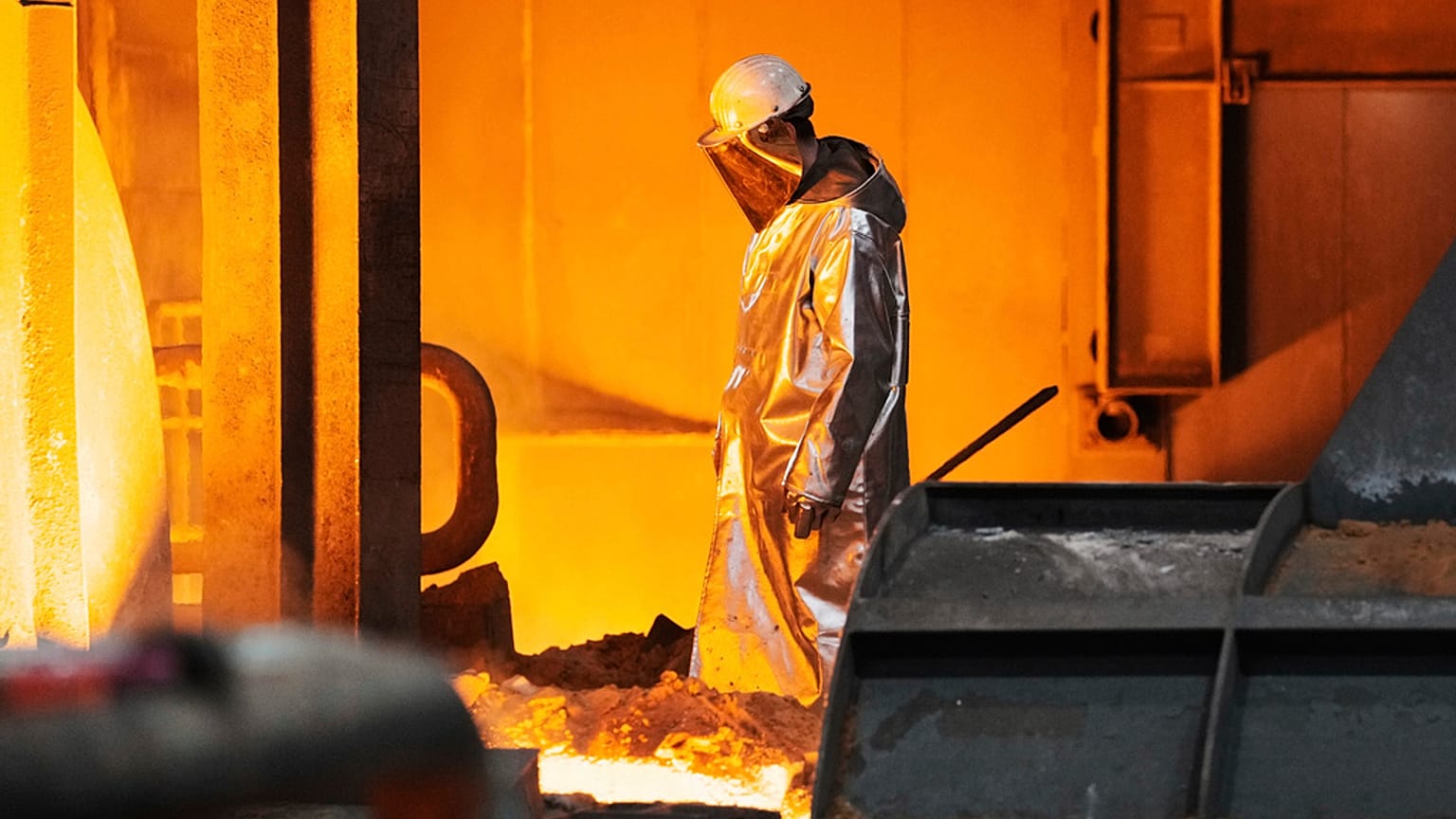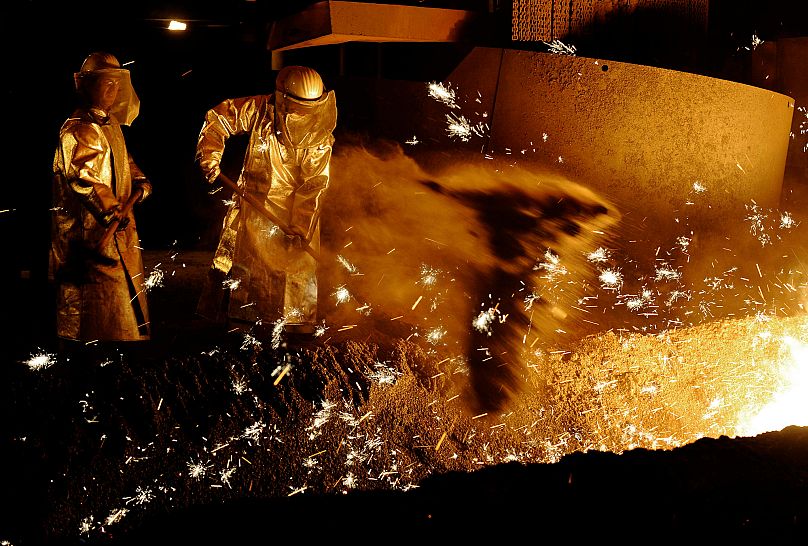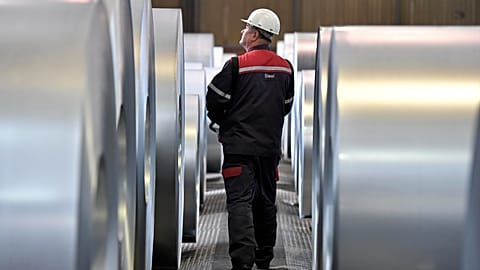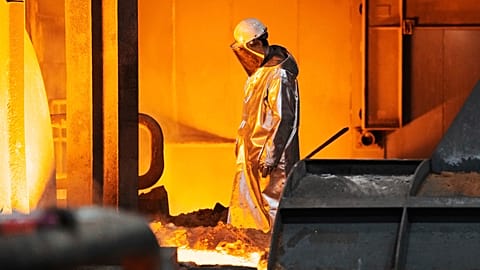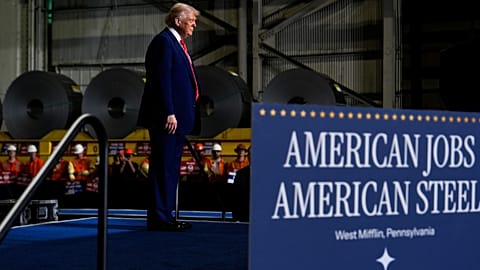EU tariffs on steel imports will be doubled to 50% beyond a reduced quota, compared to the volumes currently entering duty-free.
 ADVERTISEMENT
ADVERTISEMENT
It's rare enough to be worth noting: the European Commission can also shield its own.
To protect an industry heavily impacted by foreign competition, the EU executive proposed on Tuesday to cut in half the amount of steel imported into the bloc duty-free and to impose a 50% tariff on imports exceeding a quota of 18.3 million tonnes per year.
To put it simply, this means that the EU is drastically reducing its imports of steel in favour of its own product.
“Global overcapacity is damaging our industry. We need to act now,” European Commission President Ursula von der Leyen said in a statement.
“The Commission will continue working with industry to protect and create good jobs, and with member states and global partners — including at WTO level — to find long-term solutions to shared challenges,” she added.
As global steel surpluses reach record levels — 600 million tonnes in 2023 and over 720 million expected next year, according to the OECD — European producers complain of operating below capacity, under pressure from cheap steel, particularly Chinese steel, which is heavily subsidised.
The impact on the workers in the sector is heavy, as 18,000 jobs have been cut in the EU over the past year, according to IndustriAll, the European steel union.
EU capacities used at low levels
“Global overcapacities now are at more than five times the demand in the European Union,” a senior EU official said, adding: “And as a matter of fact, what we see is that the European steel industry is actually the only one in the world that has been reducing installed capacities”.
According to the Commission, the EU industry is currently using around 67% of its production volume.
Determined to tackle the problem head-on, the Commission has proposed reducing duty-free steel imports from 30.5 to 18.3 million tonnes per year and doubling the duties on imports above the quotas to 50% — compared to the current 25%.
The measure should increase EU industry capacity utilisation levels to 80%.
The proposal also includes a “melt and pour” rule, which will force importers to declare the origin of the steel where it was melted and poured.
The measure targets countries that circumvent EU tariffs, notably China, which is accused of routing its exports through other Asian countries or Turkey to access the EU market.
In 2024, the main suppliers of the EU were Turkey, India, South Korea, Vietnam and China, the same official said.
Will Germany support the Commission’s plan?
The quotas will also apply to the US, at a time when the EU and its transatlantic partner are engaged in tough negotiations over reducing the 50% US tariffs imposed by Washington on European steel and aluminium.
But the EU is betting that both partners will instead choose to join forces in tackling the issue of surpluses, which is also affecting the US.
To be fully adopted, the measures proposed by the Commission still need approval from the member states, gathered in the Council of the EU, and from the European Parliament.
“I urge the Council and Parliament to move ahead quickly,” von der Leyen said.
EUROFER, a lobby representing the leading steel producers of the EU, told Euronews it was optimistic and that there was a broad consensus among member states and MEPs to support such protectionist measures for the steel sector.
Besides, the Commission’s measures are in line with a French proposal backed in July by 10 other EU member states, and also endorsed in a letter to von der Leyen signed by 107 MEPs from the centre-right EPP group, the Socialists and Democrats (S&D) and the liberals (Renew Europe).
However, Germany currently holds the keys — as the EU’s leading car manufacturer, it has yet to take a position on the matter.
The senior EU official said on Tuesday the Commission was confident of support from other industrial sectors, pointing to a consultation concluded in August that showed backing for protectionist measures from the EU.
The current quotas are in effect until 30 June 2026. The Commission hopes to have the new protections for its steel industry adopted by then.














